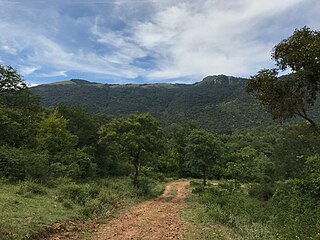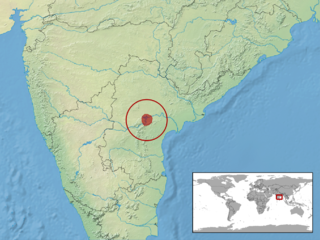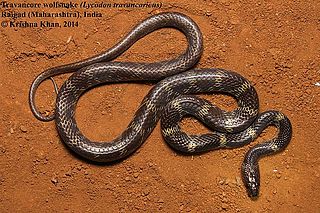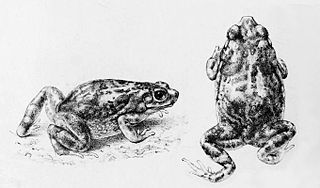
The Western Ghats aka Sahyadri is a mountain range that covers an area of 160,000 km2 (62,000 sq mi) in a stretch of 1,600 km (990 mi) parallel to the western coast of the Indian peninsula, traversing the states of Tamil Nadu, Kerala, Karnataka, Goa, Maharashtra, and Gujarat. It is a UNESCO World Heritage Site and is one of the eight hotspots of biological diversity in the world. It is sometimes called the Great Escarpment of India. It contains a very large proportion of the country's flora and fauna, many of which are only found in India and nowhere else in the world. According to UNESCO, the Western Ghats are older than the Himalayas. They influence Indian monsoon weather patterns by intercepting the rain-laden monsoon winds that sweep in from the south-west during late summer. The range runs north to south along the western edge of the Deccan Plateau, and separates the plateau from a narrow coastal plain, called Konkan, along the Arabian Sea. A total of thirty-nine areas in the Western Ghats, including national parks, wildlife sanctuaries and reserve forests, were designated as world heritage sites in 2012 – twenty in Kerala, ten in Karnataka, six in Tamil Nadu and four in Maharashtra.

The Biligirirangana Hills, commonly called BR Hills, is a hill range situated in south-eastern Karnataka, at its border with Tamil Nadu in South India. The area is called Biligiriranganatha Swamy Temple Wildlife Sanctuary or simply BRT Wildlife Sanctuary. It is a protected reserve under the Wildlife Protection Act of 1972. Being at the starting point of the Eastern Ghats and very close to Western Ghats, the sanctuary is home to eco-systems that are unique to both the mountain ranges. The site was declared a tiger reserve in January 2011 by the Karnataka government, a few months after approval from India's National Tiger Conservation Authority.
Colonel Richard Henry Beddome was a British military officer and naturalist in India, who became chief conservator of the Madras Forest Department. In the mid-19th century, he extensively surveyed several remote and then-unexplored hill ranges in Sri Lanka and south India, including those in the Eastern Ghats such as Yelandur, Kollegal, Shevaroy Hills, Yelagiri, Nallamala Hills, Visakhapatnam hills, and the Western Ghats such as Nilgiri hills, Anaimalai hills, Agasthyamalai Hills and Kudremukh. He described many species of plants, amphibians, and reptiles from southern India and Sri Lanka, and several species from this region described by others bear his name.
Tropidolaemus huttoni is a little-known species of pit viper, a venomous snake in the subfamily Crotalinae of the family Viperidae. The species is endemic to the southern Western Ghats of India. There are no subspecies that are currently recognized. Little is known about this species, as this species is known only from two young individuals, based on which it was first described in 1949. Despite long-term and targeted herpetological surveys in the particular hill range (Meghamalai), it has never been re-sighted there or elsewhere since then.

Platyceps bholanathi, also known as the Nagarjun Sagar racer, Nagarjunasagar racer, Nagarjuna racer, Bhola Nath's racer, or Sharma's racer, is a species of colubrid snake. It is found in peninsular India, in the Eastern Ghats and the Deccan Plateau, in the states of Andhra Pradesh, Karnataka, Tamil Nadu, and Telangana. It is a rather recently described species, that was first discovered in 1976, in the Nagarjuna Sagar Dam by scientists of the Zoological Survey of India.

Lycodon striatus, commonly known as the northern wolf snake or the barred wolf snake, is a species of nonvenomous colubrid snake from southern Asia.

Lycodon travancoricus, commonly known as the Travancore wolf snake, is a species of colubrid snake endemic to southwestern India.

Cyrtodactylus collegalensis, also known as the Kollegal ground gecko or forest spotted gecko, is a species of gecko found in and around Mysore hills, at the junction of the Western Ghats and the Eastern Ghats, in South India. Recent taxonomic works and genetic studies revealed that the formerly-supposed genus is actually a subgenus of the widespread genus Cyrtodactylus. It is often confused with the forest spotted gecko.
Uropeltis dindigalensis, commonly known as the Sirumalai Hills earth snake or the Dindigul Uropeltis, is a species of snake in the family Uropeltidae. It is endemic to Sirumalai and surrounding hill ranges of Southern Eastern Ghats, in Dindigul district of Tamil Nadu state in South India.

The brown palm civet also called the Jerdon's palm civet is a palm civet endemic to the Western Ghats of India.

Duttaphrynus hololius, known as Günther's toad, Malabar toad, or rock toad, is an uncommon, rock-dwelling toad found in the Eastern Ghats and Deccan plateau of peninsular India.
The Bombay swamp eel, also known as the paytop in Marathi, is a species of fish in the family Synbranchidae. It is endemic to the state of Maharashtra in India.

The Melagiris are a range of hills on the Eastern Ghats, bound by the river Cauvery on the west. Melagiri contain an expanse of 1295 km2 of dry deciduous and semi-evergreen forests. It is an elephant country and contains two traditional elephant corridors. With the Bannerghatta National Park in the North east and Cauvery Wildlife Sanctuary in the south, the forest range stretches to sanctuaries of BR Hills and Sathyamangala and joins the tiger reserves of Nilgiri Biosphere. As the meeting point of the Western Ghats and Eastern Ghats, these forests form a vital link in the elephant corridors of South India, connecting the Bannerghatta National Park and the River Cauvery. It borders some of the prominent tiger sanctuaries of the south.
Lycodon anamallensis, also known commonly as the Colombo wolf snake and the slender wolf snake, is a species of snake in the family Colubridae. The species is endemic to South Asia.

Biogeographic classification of India is the division of India according to biogeographic characteristics. Biogeography is the study of the distribution of species (biology), organisms, and ecosystems in geographic space and through geological time. India has a rich heritage of natural diversity. India ranks fourth in Asia and tenth in the world amongst the top 17 mega-diverse countries in the world. India harbours nearly 11% of the world’s floral diversity comprising over 17500 documented flowering plants, 6200 endemic species, 7500 medicinal plants and 246 globally threatened species in only 2.4% of world’s land area. India is also home to four biodiversity hotspots—Andaman & Nicobar Islands, Eastern Himalaya, Indo-Burma region, and the Western Ghats. Hence the importance of biogeographical study of India's natural heritage.
The Rishi Valley geckoella is a species of nocturnal, terrestrial, insectivorous gecko that is endemic to India. This recently described species is named after the Rishi Valley School, and this is currently known from hills of the Eastern Ghats, in Chittoor district of Andhra Pradesh state.
The Bangalore geckoella is a species of nocturnal terrestrial gecko, a lizard in the family Gekkonidae. The species is endemic to India.

Uropeltis shorttii, also known as the Shevaroy Hills earth snake or Shortt's shieldtail snake, is a species of non-venomous snake endemic to the Southern Eastern Ghats of India. This species was first described as Silybura shorttii by Richard Henry Beddome, in 1863. It is found only in the Shevaroy Hills of Salem district in Tamil Nadu state in South India. This species was misclassified into Uropeltis ceylanica, a snake endemic to the Western Ghats, for a long time, till a recent taxonomic study proved it to be a distinct species with a very narrow geographic range. It is a burrowing snake, presumed to be nocturnal; feeding on soft-bodied worms. Becomes active during the rains. This is a "data deficient" species, as it is yet to assessed for its conservation status.

Rhinophis goweri, also known as Gower's shieldtail snake, is a recently described, little-known species of snake of the family Uropeltidae. It is endemic to the Eastern Ghats of Tamil Nadu in South India.

Uropeltis rajendrani commonly known as the Rajendran's shieldtail, is a species of snake belonging to the family Uropeltidae. This recently described species is known only from a few hills in the Southern Eastern Ghats, in Namakkal and the bordering Salem district of Tamil Nadu State in South India.













